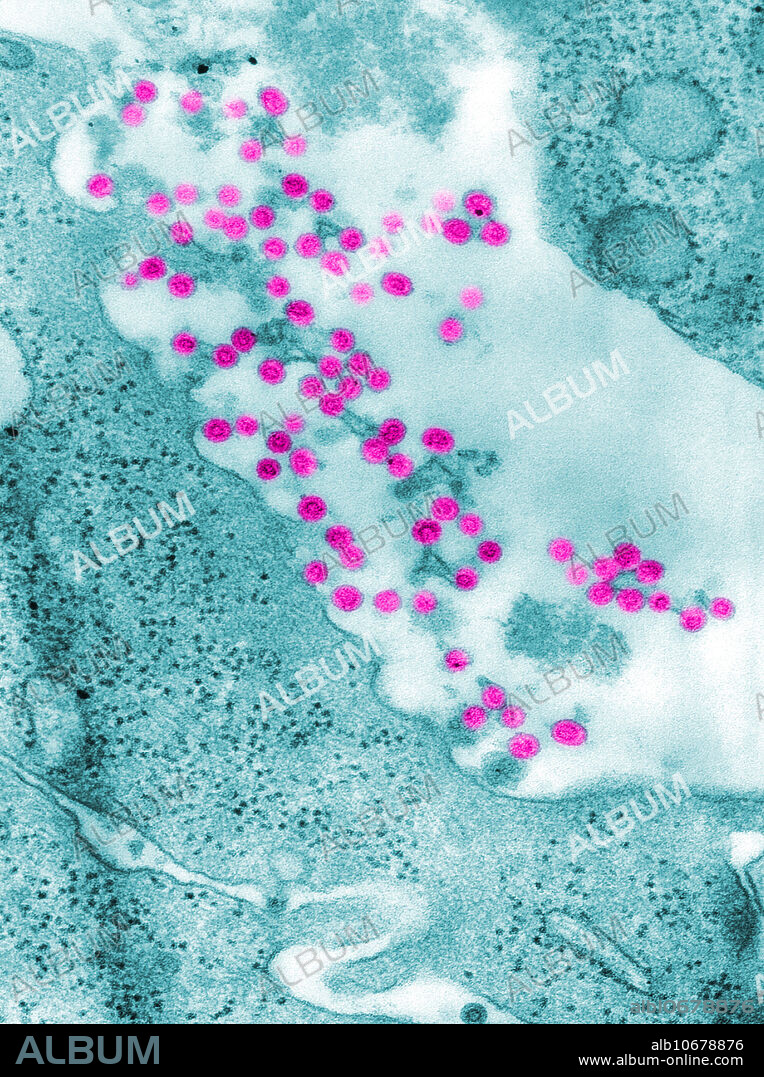alb10678876
Rubella Virus. TEM

|
Add to another lightbox |
|
Add to another lightbox |



Buy this image.
Select the use:

Title:
Rubella Virus. TEM
Caption:
Negatively-stained transmission electron micrograph (TEM) of Rubella virus virions (purple) budding from the host cell surface. This process produces an enveloped virus particle, which means that after budding, the spherical virions' icosahedral capsid is enclosed in the host cell membrane. Inside the capsid lies the Rubella virus' positive-sense single-stranded RNA (( )ssRNA) genome. The Rubella virus is known to be the cause of rubella, otherwise known as German measles. Rubella, also known as German measles or 3-day measles, is a respiratory viral infection characterized by mild respiratory symptoms and low-grade fever, followed by a maculopapular rash lasting about 3 days.
Credit:
Album / CDC/Science Source
Releases:
Model: No - Property: No
Rights questions?
Rights questions?
Image size:
2341 x 3136 px | 21.0 MB
Print size:
19.8 x 26.6 cm | 7.8 x 10.5 in (300 dpi)
Keywords:
BUDDING • CAPSID • COLOR • COLOUR • CONTAGIOUS • DISEASE • ELECTRON • ENHANCE • ENHANCEMENT • GERMAN MEASLES • GERMAN • GERMANS • HISTOPATHOLOGY • ICSAHEDRAL • INFECTIOUS • MEASLES • MEDICAL • MEDICINAL • MICROGRAPH • MICROGRAPHY • MICROSCOPY • NO ONE • NO-ONE • NOBODY • PATHOLOGY • PHOTOMICROGRAPH • RUBELLA • RUBIVIRIDAE • RUBIVIRUS • TEM • TOGAVIRIDAE • TOGAVIRUS • TRANSMISSION • VIRAL • VIRION • VIROLOGY • VIRUS
 Pinterest
Pinterest Twitter
Twitter Facebook
Facebook Copy link
Copy link Email
Email
